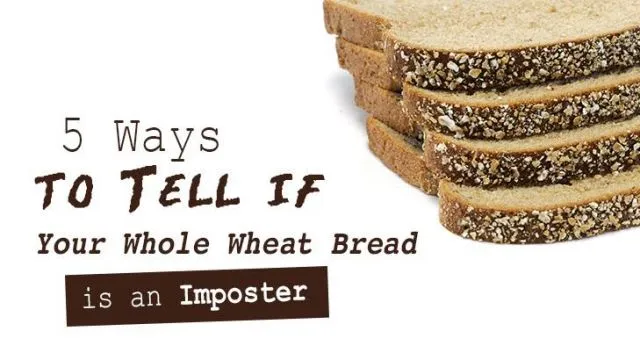
- Share on Facebook64
- Share on Pinterest
- Share on Twitter
There’s no denying it: Bread is delicious. And what could be more delicious, and indeed healthier, than whole-wheat bread?
Unfortunately, it’s not as simple as just finding the nearest loaf of bread that boldly states “whole grain” or “whole wheat,” throwing it in your supermarket cart and skipping merrily down the pathway to health. There are a lot of misconceptions about what constitutes whole-wheat or whole-grain bread, and you’d do well to know what to look out for if you value your health.
What are whole grains?
If a product says that it contains whole grains or whole wheat, this means that it should include every part of a cereal grain kernel, including the bran, germ and inner part of the kernel (endosperm). Whole grains are considered superior to grains that have been mechanically or chemically separated, as they contain more antioxidants, fiber and phytochemicals than their refined counterparts.
The truth about whole-wheat bread
The US Food and Drug Administration (FDA) has proposed regulations for the labeling of whole grains, but these regulations have not yet been finalized. For this reason, they currently take a very relaxed stance on how whole-grain or whole-wheat products should be labeled, merely “recommending” that a product be labeled as whole wheat only when all of the flour ingredients are from whole-wheat flours. The keyword there is “recommend” — if there’s anything you should know about food manufacturers, it’s that they won’t even bat an eyelid at sidestepping a recommendation if it stands in the way of profit.
Sadly, the FDA isn’t the only governing authority to take a weak stance on whole grains. The Whole Grains Council, a nonprofit organization made up of millers, manufacturers, scientists and chefs interested in promoting whole-grain products, has created a “Whole Grain Stamp,” which may be used on any product that contains a minimum of eight grams of whole grains per serving. Products that show the stamp on their packaging are not required to be 100 percent whole grain, and in reality, most products that do employ this stamp contain more refined white flour than whole grains.
How to ensure you’re buying the real deal
After reading through the above, you’ve probably lost some faith in the system and now have a profound distrust of every loaf of bread you come across. That’s not necessarily a bad thing — a little bit of distrust is a powerful weapon in the fight against food-labeling uncertainty, and it’ll help you weed out the imposters and locate the true-blue contenders.
- Check the ingredients
The first step is, as always, to consult the ingredients list on the back of the packaging. Look for the word “whole” preceding the names of the grains in your loaf of bread — while the packaging may be able to twist the truth a little, the ingredients cannot lie. And keep in mind that ingredients are listed from most common to least common, so stick to those breads that list “whole wheat” or “whole [insert grain here]” as the first ingredient.
- Anything other than “whole” just means “refined”
Don’t get fooled by fancy-schmancy words used to describe this type of wheat or that type of grain. There’s no substitute for a whole grain, so if the ingredients talk about wheat flour, unbleached wheat, enriched wheat or unbromated wheat flour, they’re really just saying “refined.” And refined is not what you’re looking for in a healthy loaf of bread.
- Look for the FDA-approved health claim
While we’ve established that the FDA has a fairly loose stance on whole grains, there is one FDA-endorsed label that they’re firm on. Any packaging that states “diets rich in whole grain foods and other plant foods and low in total fat, saturated fat, and cholesterol may reduce the risk of heart disease and some cancers” is required by law to contain a minimum of 51 percent whole-grain ingredients. For this reason, looking out for that label will help you to quickly get on the road to health.
- Make sure you’re getting the grains you want
Just because a bread’s packaging claims it as being a certain type, such as “oatmeal and pumpkin seed” or “rye and barley,” doesn’t mean that those things need to be the primary ingredients. Establish which grains you actually want to have in your loaf of bread, then make sure they’re listed at the start of the ingredients.
- Be vigilant, and trust no one!
It sounds a little dramatic, but food manufacturers are out to make a profit and only care about your health if they’re required to do so by law or if they can make some money out of it. Keep in mind that what they claim on the packaging or labeling doesn’t always correspond to what’s actually in the bread, and you’ll do just fine.
Not everyone is made to eat bread, and many of us have a gluten sensitivity to wheat, rye or barley that we’ve been ignoring because bread is just so darn tasty. If this is you, try this tasty gluten-free bread recipe
—Liivi Hess
- Share on Facebook64
- Share on Pinterest
- Share on Twitter

